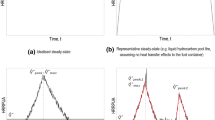Abstract
A reliable and stable ventilation system is essential to the safe operation of underground mines. The stability of a mine ventilation system becomes extremely critical while responding to a fire incident since an unstable ventilation system will pose a risk of airflow reversal. The reversed airflow could bring the fire contaminants such as toxic gases and smoke unexpectedly to working areas. In the past few years, there has been a growing interest in the study of ventilation network stability using the concept of resistance sensitivity, which is described as an indicator of how the airflow in an airway is reacting to a resistance change of other airways. Several methods of calculating the resistance sensitivity in a mine ventilation network have been carried out by researchers and scholars around the world. However, the proposed methods heavily rely on a vast amount of mine ventilation simulations, which are very time consuming and computer-power intensive, especially for a large-scale mine ventilation network. In this paper, a derivative method calculating the resistance sensitivities with a single mine ventilation simulation has been developed and implemented into a mine fire simulation software, MFIRE. The results from the derivative method were verified against the results from a traditional method. The derivative method has been proven to be reliable and accurate.





Similar content being viewed by others
References
Chang X, Lagge LW, Greuer RE (1990) A User's Manual for MFIRE: A Computer Simulation Program for Mine Ventialtion and Fire Modeling. U.S. Bureau of Mines Information Circular 9245
Dziurzynski W, Krach A, Palka T (2017) Airflow sensitivity assessment based on underground mine ventiltion systems modeling. Energies 10(10):1451
Griffith M, Stewart C (2019) Sensitivity analysis of ventialtion models where not trust your simulation. Proceedings of the 17th North American Mine Ventilation Symposium (pp. 654–660). Montreal, Canada: The Canadian Institute of Mining, Metallurgy and Petroleum
Hartman HL, Mutmansky JM. Ramani RV, Wang YJ (1997) Mine ventilation and air conditioning (3rd ed.). John Wiley & Sons, Inc.
Jia J, Jia P, Li Z (2020) Theoretical study on stability of mine ventilation network based on sensitivity analysis. Energy Sci Eng 00:1–8. https://doi.org/10.1002/ese3.699
Li G, Kocsis C, Hardcastle S (2011) Sensitivity anlysis on parameter changes in underground mine ventilation systems. J Coal Sci Eng 17(3):251–255
Semin M, Levin L (2019) Stability of air flows in mine ventilation networks. Process Saf Environ Prot 124:167–171 https://doi.org/10.1016/j.psep.2019.02.006
Zhou L, Luo Y, Wu F (2007) Identificataion of abnormal airflow quantity in underground coal mines. Int J Miner Resour Eng 12(4):257–265
Acknowledgements
Data from this manuscript had been presented as a preprint of the MINEXCHANGE 2022 SME Annual Conference & Expo held February 27-March 2, 2022, in Salt Lake City, Utah.
Author information
Authors and Affiliations
Corresponding author
Ethics declarations
Conflict of Interest
The authors declare no competing interests.
Additional information
Publisher’s Note
Springer Nature remains neutral with regard to jurisdictional claims in published maps and institutional affiliations.
Rights and permissions
About this article
Cite this article
Zhou, L., Bahrami, D. A Derivative Method to Calculate Resistance Sensitivity for Mine Ventilation Networks. Mining, Metallurgy & Exploration 39, 1833–1839 (2022). https://doi.org/10.1007/s42461-022-00630-z
Received:
Accepted:
Published:
Issue Date:
DOI: https://doi.org/10.1007/s42461-022-00630-z




